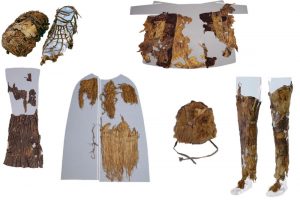The mummified remains of a man dubbed Ötzi, that were found in 1991 on the border of Austria and Italy underwent specialised DNA analyses to reveal new information about the clothes that the man was dressed in at the moment of death. Team led by archaeologist Niall J. O’Sullivan of University College in Dublin, used a technique known as mitochondrial enrichment to acquire new data about life in the Copper Age (around 3300 BC).

The clothes and their fragments found on the body include coat, leggings, hat, shoelaces and loincloth, which – together with the quiver – served as basis for the samples. The applied method involves harvesting the mitochondrial DNA, using reagents enzymes that concentrate and amplify it. The animal material with its genetic data survived millennia in a glacial deep freeze. What the researchers were aiming for was being able to reveal what species of animal were used to create clothing for the ice man. The study revealed that the leggings were made with goat leather, loincloth with sheep leather and coat with the skin of both species, and also that the materials came from multiple individuals – at least four sheep and two goats. Furthermore, the shoelaces were made from cattle, the quiver was made with roe deer, and the material used for the hat came from a brown bear.
(after Times & Institute for Mummies and the Ice Man)